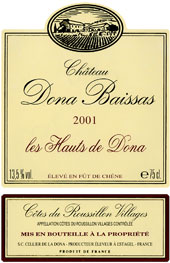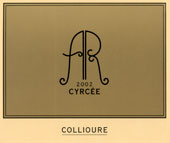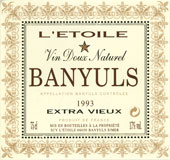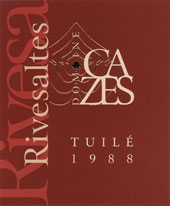
Les Vins du Roussillon: a tasting of the St Bacchus 2005 award-winning wines
 |
Les Vins du Roussillon: a tasting of the St Bacchus 2005 award-winning wines |
|
The Saint Bacchus awards were created in 1984 by the association of "Les Maîtres Tasteurs du Roussillon" to recognise the finest examples of appellation d'origine contrôlée (AOC) wines and vins de pays from the Roussillon region.
In 2005, 377 samples were submitted covering the following appellations:
A.O.C. Côtes du Roussillon (blanc, rosé, rouge)
Côtes du Roussillon Les Aspres
Côtes du Roussillon Villages
Côtes du Roussillon Villages Caramany
Côtes du Roussillon Villages Latour de France
Côtes du Roussillon Villages Lesquerde
Côtes du Roussillon Villages Tautavel
Collioure (blanc, rosé, rouge)
A.O.C. Vins Doux Naturels:
Banyuls
Banyuls Grand Cru
Rivesaltes
Muscat de Rivesaltes
Maury
Vins de Pays.
In early April, the Maîtres Tasteurs du Roussillon make a preliminary selection of the wines and then in mid-May an international jury of oenologues, wine-buyers, sommeliers and journalists from around Europe taste this selection and decide on the awards to be made. In 2005, twenty-one awards were made in 16 categories.
 The
Côtes du Roussillon and Côtes du Roussillon Villages have had
appellation contrôlée status since 1977 and cover 5,537 hectares in Côtes du
Roussillon and a further 2,300 hectares in Côtes du Roussillon Villages.
The white wines are generally made from macabeu and grenache grapes, sometimes
with small quantities of malvoisie. Since 1988, marsanne, roussanne and
vermentino (aka rolle) have also been permitted. Rosé wines are made from
carignan, grenache noir, mourvèdre and syrah, sometimes with a soupçon of
macabeu. For the red wines, carignan, grenache noir, syrah and mourvèdre
are used, often vinified using carbonic maceration. A new appellation,
Côtes du Roussillon Les Aspres, came into being in 2005,
covering only red wines from the 37 communes of les Aspres and Les Albères.
The
Côtes du Roussillon and Côtes du Roussillon Villages have had
appellation contrôlée status since 1977 and cover 5,537 hectares in Côtes du
Roussillon and a further 2,300 hectares in Côtes du Roussillon Villages.
The white wines are generally made from macabeu and grenache grapes, sometimes
with small quantities of malvoisie. Since 1988, marsanne, roussanne and
vermentino (aka rolle) have also been permitted. Rosé wines are made from
carignan, grenache noir, mourvèdre and syrah, sometimes with a soupçon of
macabeu. For the red wines, carignan, grenache noir, syrah and mourvèdre
are used, often vinified using carbonic maceration. A new appellation,
Côtes du Roussillon Les Aspres, came into being in 2005,
covering only red wines from the 37 communes of les Aspres and Les Albères.
Collioure is the smallest appellation in Roussillon, with an annual production of around 15,000 hl. Red, rosé and (since 2002), white wines are produced from the four coastal communes of Collioures, Port-Vendres, Banyuls and Cerbère. The principle grape is the grenache noir, supported by mourvèdre, syrah and carignan. In addition, grenache gris can be included in Collioure rosés. White Collioure is made in small quantities from grenache blanc and grenache gris, with the addition of vermentino, or marsanne or roussanne in certain cuvées.
The vins doux naturels appellations are one of the traditional characteristics of Roussillon, which produces some 85% of all French vins doux naturels. They have been made for centuries, using a process known in French as "mutage" (which is essentially fortification, using a spirit to halt fermentation, as in port and sherry). Roussillon claims that mutage was discovered in 1285 by one Arnau de Vilanova, a doctor and philosopher who spent much of his life in Montpellier. He discovered that by adding a neutral alcohol in the proportion of between 5% and 10% to the fermenting wine, the alcohol would kill the yeasts and so the fermentation would be stopped, leaving a naturally sweet wine, as the fruit sugars have not been consumed by the yeast.
The characteristics of Roussillon's vins doux naturels vary according to the local terroir, the grape varieties and their method of production. There are four varieties of vins doux naturels made in the Roussillon: red and white; and amber and tuilé. The latter two are, respectively, whites with oxidation and reds with oxidation. Much of the vin doux production is produced in the oxidised ambré and tuilé styles by maturing the wine in large casks or even sometimes in glass demijohns placed outside in the open air and the sun for three or four seasons. Some bottles of ambré or tuilé may additionally mention "rancio" on the label: these have undergone a further process of oxidation.
Rivesaltes, (as
opposed to muscat de rivesaltes - see below), is the largest appellation,
covering 86 communes in the Pyrénées-Orientales and nine communes in the Aude.
Banyuls and Banyuls Grand Cru are the vin doux counterpart to the
Collioure table wines, and can only be made in the same four communes of
Collioure, Port-Vendres, Banyuls and Cerbère. Grenache (noir and gris) is
the main grape variety, though small quantities of carignan may be added.
Banyuls Grand Cru wines have to have a minimum of 75% grenache noir and be aged
in barrel for a minimum of thirty months. Tiny amounts of white Banyuls
are made, principally from grenache blanc and grenache gris.
The appellation of Maury covers principally the commune of Maury and a
part of three neighbouring communes. Most Maury is made from grenache
noir, often vinified by long maceration. White Maury is rare and made
mainly from grenache gris and blanc and from macabeu.
Muscat de Rivesaltes can be made
throughout the three proceeding appellation contrôlée areas. As the name
suggests, it is made exclusively from muscat grapes: either muscat à petits
grains or muscat d'Alexandrie. Some producers will allow particular cuvées
to macerate on the skins to give a greater aromatic extraction.
In September 2005, I tasted a selection of the 2005 St Bacchus award winners courtesy of the Conseil Interprofessionnel des Vins du Roussillon.
| Appellation | Wine | Notes | |
| Côtes du Roussillon Blanc | 2004 Château Rombeau, Domaine de Rombeau | 40 % grenache blanc, 30 %
marsanne, 30 % vermentino. 70 % vinified in stainless steel, 30 %
vinified in new barriques and then aged in barrique for three months.
8,400 bottles produced. Pale straw. Good nose with nice character. Powerful flavours with good balance, but all in all a bit ordinary. Good/Very Good. |
 |
| Côtes du Roussillon Rosé | 2004 Trémoine de Rasiguères, Les Vignerons de Planèzes-Rasiguères | 60 % syrah, 30 % grenache
noir, 10 % carignan. A brief macération on the skins (to extract the
colour) followed by temperature controlled fermentation , before three
months ageing in stainless steel. 40,000 bottles produced. A very vibrant raspberry pink. Lovely warm, red fruit nose. Let down a bit on the palate: very light and very fresh, but not entirely together, and there are a few harsh notes. Very Good. |
 |
| Côtes du Roussillon Rouge | 2004 Le Clos, Domaine Boudau | 70 % grenache noir, 20 %
syrah, 10 % carignan. Traditional maceration for 18 days. 10,000
bottles produced. Young, vibrant purple-red. Very young and very fresh on the nose and a touch unimpressive. Good attack with nice warm fruit on the palate. Perhaps a bit unimpressive. Good. |
 |
| 2002 Château Valmy, Château de Valmy | 50 % syrah, 25 % grenache
noir, 25 % mourvèdre. Harvested by hand. Part cold-macerated
before fermentation; part maceration carbonique. Aged for 12
months in bottle before release. 8,200 bottles produced. An even ruby. Perfumed, quite intense red fruits on the nose with a touch of bubble gum. Light and fresh on the palate. Good easy drinking. Good. |
 |
|
| Côtes du Roussillon Villages | 2003 Kerbuccio, Château Saint-Roch | 40 % grenache noir, 40 %
syrah, 20 % mourvèdre. Long traditional macération of 4 to 5 weeks. Aged
14 months in new fûts. 11,600 bottles produced. Rather deep colour. Really lovely nose - fresh red and plummy fruits and a bit herby. But it's a bit hard and green on the palate. Not impressed by this. OK. |
 |
| 2001 Les Hauts de Dona, Château Dona Baissas | 30 % syrah, 25 % grenache
noir, 25 % mourvèdre, 20 % carignan. Aged 12 months in fûts. 6,000
bottles produced. A very deep colour. Impressive nose, with lots of character, with notes of toast, roast meat and a cheesy sweatiness that's curiously appealing. Very full attack with warm fruit. This is lovely stuff. Loads of character. Positively balloons out on the finish. Excellent. |
 |
|
| Collioure Blanc | 2004 Padreils, Le Dominicain | 80 % grenache blanc, 20 %
grenache gris. Half the wine is fermented in new oak barriques with
daily batonnage. 10000 bottles produced. Pale gold with green tinges. A decent, rather almondy nose with some vanilla. Not overly impressive on the palate: seems to lack Roussillon/Collioure character. Good. |
 |
| Collioure Rosé | 2004 Cornet & Cie, Cave de l'Abbé Rous | A rosé de saignée from 50
% grenache noir and 50 % syrah. 13,000 bottles produced. Attractive, strawberry juice colour. Round, quite garriquey red fruit, with quite a perfume of strawberries, on the nose. Very disappointing on the palate. Just incredibly straightforward. OK. |
 |
| Collioure Rouge | 2002 Cyrcée, Cave de l'Abbé Rous | Made from selected
bunches of 35 % grenache noir, 25 % mourvèdre, 25 % syrah and 15 %
carignan. Malolactic fermentation in new barriques. 7,400
bottles produced. A youthful dark ruby. Lovely, powerful yet inviting nose with plums, blackberries and coffee. Round and open with a nice freshness on the palate. Loads of character, yet with good elegance throughout. Layers of flavours with some minerally notes coming through here and there. Very good on the finish. Very Good Indeed. |
 |
| Banyuls | 2003 Rimatge, Cellier des Templiers | 100% grenache noir;
individual berry selection. 112,000 bottles produced (!) Gorgeous blackberry chocolate flavours. Lovely vibrant fresh flavours. Really very nice indeed. Excellent. |
 |
| 1993 Extra Vieux, L'Étoile | 75% grenache noir, 15%
grenache gris, 10% carignan noir. 1500 bottles produced. An orangey teak colour. A markedly oxidised, complex, nutty nose. Very integrated. Maybe a touch hot. Very Good. |
 |
|
| Banyuls Grand Cru | 1994 Cuvée Président Henri Vidal, Cellier des Templiers | 100% grenache noir.
40,800 bottles produced. A gorgous colour: a very light tawny. Perfumed nutty nose with hints of gingerbread and a bit of oxidation. Loads of citrus flavours on the palate, combining with the black fruits to give some really interesting flavours. Very elegant all the way to the finish, when it's just spoiled a little by a bit too much spirit. Very Good Indeed. |
 |
| Maury | 2003 Pollen, Les Vignerons de Maury | 100% grenache noir; 6
weeks macerating. Bottled 12 months after harvest. 10,000
bottles produced. An even garnet. Spirity chocolate coated cherries and raspberries on the nose. Very round and even, with excellent balance. But perhaps it's a bit simple? Very Good/Very Good Indeed. |
 |
| 12 Ans, Les Vignerons de Maury | 100% grenache noir. Tawny orange appearance. Very, very nutty nose with dried fruits and some dried strawberries. Very elegant on the palate with good plummy fruit character. Remarkable freshness. Lovely and clean, with huge character and elegance. Excellent. |
 |
|
| Muscat de Rivesaltes | 2004 Château Rombeau, Domaine de Rombeau | 100% muscat à petits
grains. Temperature controlled fermentation. 5,400 bottles
produced. A very pale, lemon straw-gold. Lovely perfumed nose. Very light, bright and elegant. Markedly sweet on the attack, though it doesn't seem entirely together. Very grapey, very melony character in the mouth, with a touch of spirit on the finish. Very Good Indeed. |
 |
| Rivesaltes Grenat et Tuilé | 2003 Rivesaltes sur Grains, Domaine Boudau | 100% grenache noir.
Bottled at the start of summer 2004. 10,000 bottles produced. A bright young mauve. Really lovely, elegant, fragrant nose. Gorgeous on the palate, with lovely balance. Huge depths. Very Good Indeed/Excellent. |
 |
| 1988 Rivesaltes Tuilé, Domaine Cazes | 100% grenache noir.
Aged in foudres for 12 months. 15,000 bottles produced. A very dark, orangey, salmon pink. A touch closed on the nose, eventually yielding some sweet kirsch notes and a touch of woodiness. An interesting variety of flavours and indeed styles: one moment it's sweet, the next it's a touch savoury, then there's some nice freshness. Very Good Indeed. |
 |
|
| Rivesaltes Ambré | 1986 Pierre d'Aspres, Le Cellier de Trouillas | 80% grenache blanc, 20%
macabeu. Aged in wood for 15 years. 3000 bottles produced. Caramel orange colour. Smoky nose with a roundening out from the the oak elevage till it almost has a hint of rum. A bit caramelly on the palate with some citrus and tropical fruit flavours. Good balance, but this isn't really doing it for me. Very Good/Very Good Indeed. |
 |
The remaining wines receiving Bacchus awards were the following vins de pays, which I did not taste:
Vin de Pays Blanc: 2004 Chardonnay, Les Vignerons des Côtes d’Agly
Vin de Pays Rosé: 2004 Le Petit Closi, Domaine Boudau
Vin de Pays Rouge: 2004 Cuvée Ninet de Pena, Les Vignerons de Cases de Pène
Back to Andrew Stevenson's web page
Last updated: 12 April 2006